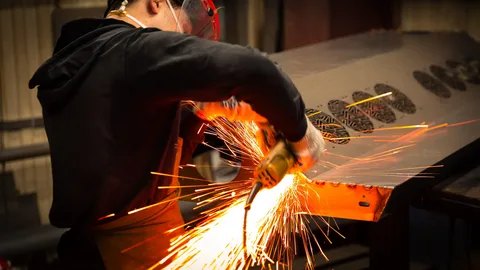Fabrication plays a vital role in various industries, from construction to manufacturing. At its core, high-quality fabrication refers to the precise and meticulous process of creating products or structures using high-grade materials and superior craftsmanship. This is essential for products that must withstand rigorous use, environmental challenges, and long-lasting performance. High quality fabrication aligns with industry standards and best practices, resulting in exceptional outcomes that cater to specific needs. (Visit: High Quality Fabrication)
For those looking to understand more about practical applications of high-quality fabrication, companies such as Woodpeckers Global provide services that exemplify the principles of precision and excellence. Their commitment to superior fabrication can be explored further at https://woodpeckersglobal.com/.
Key Aspects of High Quality Fabrication
Materials and Techniques
One of the defining aspects of high-quality fabrication is the selection of materials. Quality metals, plastics, and composites are often utilized to ensure durability and reliability, which can significantly impact not just the aesthetics but also the functionality of the final product. Advanced manufacturing techniques such as CNC machining, laser cutting, and welding are employed to achieve precision design and construction.
Skilled Workforce
A crucial element of high-quality fabrication is the workforce behind it. Highly skilled fabricators and engineers bring expertise and craftsmanship, ensuring that every piece meets stringent standards. Continuous training and development ensure that workers keep pace with technological advances and changes in industry standards, guaranteeing that high-quality fabrication becomes more advanced and efficient over time.
Quality Control Practices
Quality control is paramount in high-quality fabrication. Implementing rigorous testing and inspection processes throughout the fabrication stages helps in identifying any defects early on. This proactive approach minimizes waste, reduces costs, creative exhibition stall design and ensures that the end product meets or exceeds client expectations.
Benefits of High Quality Fabrication
Enhanced Durability
One significant benefit of high-quality fabrication is the enhanced durability of the products. Industries that rely on equipment and structures that must endure extreme conditions—such as aerospace, automotive, and construction—benefit immensely from high-quality fabrication. For instance, aerospace components, made with top-tier materials and fabricated with precision, are crucial for safety and performance in flight.
Increased Efficiency
High-quality fabrication often leads to increased efficiency in production. When materials are cut and assembled accurately, the time required for assembly is reduced. This is particularly important in industries like automotive manufacturing, where any delay can translate into significant financial losses. Companies implementing streamlined high-quality fabrication protocols can keep their production lines running smoothly and reduce downtime.
Cost-Effectiveness
While high-quality fabrication might come with higher initial costs, it proves cost-effective in the long run. Products that are manufactured to last require fewer repairs and replacements, providing value to consumers and businesses alike. For instance, in the realm of infrastructure, investing in high-quality fabrication for bridges and roads ensures longevity and minimizes future maintenance costs.
Challenges and Misconceptions
Perceptions of Expense
One common misconception surrounding high-quality fabrication is that it is always prohibitively expensive. While initial costs can be higher, particularly with superior materials and skilled labor, the long-term benefits render it cost-effective. Many industries face challenges with budget constraints, but effective communication about the potential for reduced maintenance and repair costs can help alleviate concerns.
Skill Shortages
Finding skilled labor is another challenge in high-quality fabrication. As technology evolves, so too do the skills required to perform high-quality work. Investing in workforce training and leveraging new technologies to assist with fabrication processes can bridge the skills gap and maintain high standards.
Implementing High Quality Fabrication Effectively
To integrate high-quality fabrication into your business or project, consider the following practical steps:
Assess Material Options
Evaluate the materials required for your project carefully. Choose high-grade materials that offer the best combination of durability and cost-effectiveness. Collaborate with suppliers who prioritize the quality of the materials they provide, and ensure that you understand the properties and benefits of each option available.
Invest in Training
Prioritize training for your workforce to ensure they possess the necessary skills and knowledge for high-quality fabrication. Workshops, seminars, and collaborations with educational institutions can be excellent ways to upskill your staff and enable your team to keep pace with industry advancements.
Implement Quality Control Measures
Establish a robust quality control system to monitor every aspect of your fabrication process. This should include regular inspections, testing, and feedback from all stakeholders involved in the supply chain, from material suppliers to end-users.
Foster Communication
Encourage open lines of communication between your team, suppliers, and customers. Understanding client needs is essential in the fabrication process, as is the ability to share feedback regarding quality, efficiency, and outcomes.
Conclusion
High-quality fabrication is a fundamental aspect of modern manufacturing and construction that enhances durability, efficiency, and cost-effectiveness. By investing in superior materials, skilled labor, and rigorous quality control, companies can ensure their outputs meet the highest standards. Overcoming misconceptions around costs and skill shortages through effective training and communication will allow businesses to flourish in today’s competitive landscape. Embracing high-quality fabrication not only yields long-term benefits but strengthens the foundation for future innovations across various industries.


